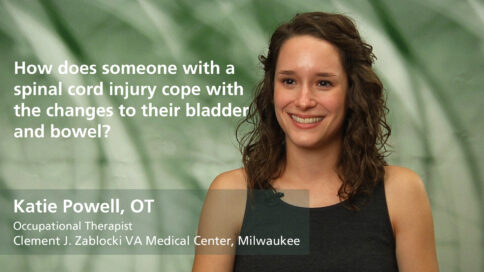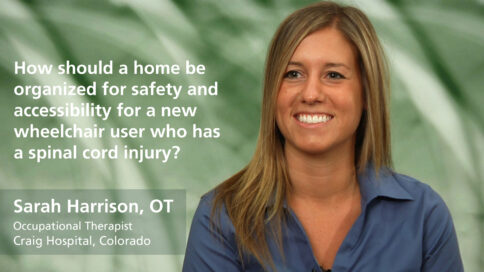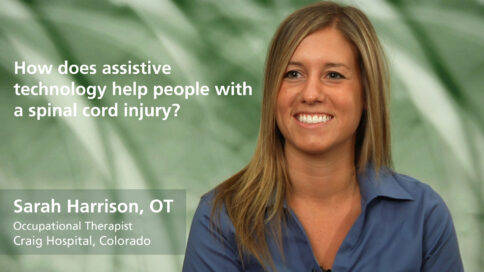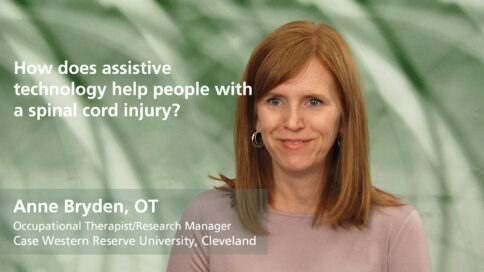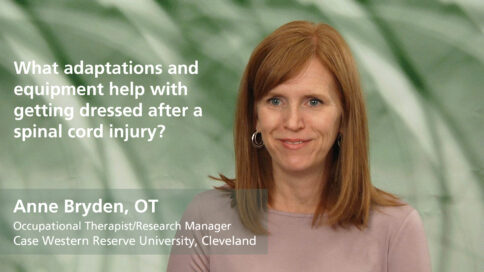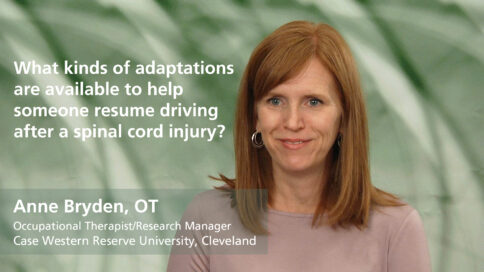The goal of occupational therapists (OT) is to enable spinal cord injury patients to develop, recover, improve, and maintain the skills needed for daily living and working. They help patients learn techniques and find adaptations that maximize independence and self-care. Occupational therapists begin working with patients in the hospital and continue throughout the rehabilitation process and beyond.
In this section, four prominent occupational therapists answer common questions about their role (4 Q&A videos). They explain the techniques they teach to enable eating after a spinal cord injury (3 Q&A videos), cooking (3 Q&A videos), bathing (2 Q&A videos), getting dressed (2 Q&A videos) and hygiene and grooming (2 Q&A videos). They discuss how to cope with changes in bowel and bladder (1 Q&A video) and explore the world of assistive adaptations that enable people with SCI to use voice-activated technology (1 Q&A video), telephones and computers (2 Q&A videos) and to resume driving (3 Q&A videos).
What is the role of occupational therapy after a spinal cord injury?
How soon after a spinal cord injury should occupational therapy begin?
What does occupational therapy help patients with a spinal cord injury to accomplish?
How does someone with a spinal cord injury cope with the changes to their bladder and bowel?
Why is independence important for someone with a spinal cord injury?
What should family members understand about independence after a spinal cord injury?
What role do occupational therapists play in the transition from hospital to home after a spinal cord injury?
How do occupational therapists educate family members in the transition from hospital to home?
In what ways do occupational therapists educate family members after a spinal cord injury?
Why are follow-up visits to an occupational therapist important after a spinal cord injury?
What home modifications are necessary for someone using a wheelchair after a spinal cord injury?
How should a home be organized for safety and accessibility for a new wheelchair user who has a spinal cord injury?
How does assistive technology help people with a spinal cord injury?
What funding options are available to help pay for assistive technology after a spinal cord injury?
How do occupational therapists help with eating after a spinal cord injury?
What adaptations and equipment help with cooking after a spinal cord injury?
How do adaptations and equipment help with bathing after a spinal cord injury?
What adaptations and equipment can help with personal hygiene and grooming after a spinal cord injury?
What adaptations and equipment help with getting dressed after a spinal cord injury?
What adaptations can help someone with a spinal cord injury use a computer and phone?
How does “voice activation” technology help someone with a spinal cord injury control their environment?
What kinds of adaptations are available to help someone resume driving after a spinal cord injury?
How can people with spinal cord injuries find a Driver Rehabilitation program?








